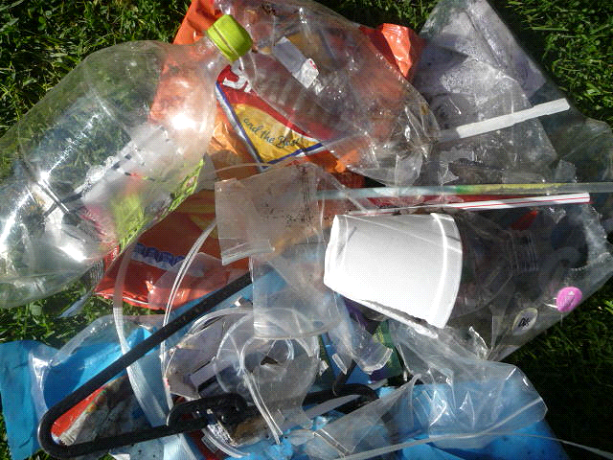
Consumption & Recovery Data Report shows targets unattainable – Australia
Posted on April 30, 2024 by DrRossH in Plastic RecyclingThe fifth iteration of its annual Consumption & Recovery Data Report provides an analysis of packaging consumption
Source: Consumption & Recovery Data Report shows targets unattainable – Inside Waste
APCO has released the fifth iteration of its annual Consumption & Recovery Data Report. This data report provides an analysis of packaging consumption and recovery in the Australia market in 2021-22, and measures Australia’s progress towards the 2025 National Packaging Targets (2025 Targets).
The report has revealed modest progress towards the 2025 targets. These results were consistent with the findings of the National Packaging Targets Review conducted in 2023. Key findings from thereport include:
- In 2021-22, Australia’s total packaging placed on the market was estimated at 6.98 million tonnes. This included paper and paperboard (52.3 per cent), plastic packaging (18.3 per cent), glass packaging (16.4 per cent), wood packaging (8.8 per cent), and metal packaging (4.3 per cent).
- The total post-consumer packaging recovery was estimated at 3.91 million tonnes (56 per cent). This recovery was primarily of paper and paperboard (64 per cent), followed by glass (18.4 per cent), wood (7.1 per cent), plastic (6.6 per cent), and metal (3.9 per cent).
- Post-consumer recycled content in packaging was 2.57 million tonnes (40 per cent of total packaging).
- It was estimated that 84 per cent of the total packaging (by tonnage) was classified as having good recycling potential. Over 90 per cent of glass (100 per cent), metal (100 per cent) and paper and paperboard (93 per cent) were classified as having good recycling potential, while only 42 per cent of plastic packaging was classified as having good recycling potential.
- Australia’s progress against the 2025 targets includes:
- Target 1: 100 per cent reusable, recyclable or compostable packaging.
- Result: The proportion of recyclable packaging decreased from 86 per cent to 84 per cent.
- Note: This was caused by the change in the recycling potential score for flexible B2C plastic packaging. This decision was made to reflect an extraordinary industry event where collection and reprocessing facilities became unavailable despite the technical recyclability of this material.
- Target 2: 70 per cent of plastic packaging being recycled or composted.
- Result: The plastic recycling rate increased from 18 per cent to 20 per cent.
- Target 1: 100 per cent reusable, recyclable or compostable packaging.
- Target 3: 50 per cent of average post-consumer recycled content included in packaging.
- Result: The average recycled content increased from 39 per cent to 40 per cent.
- Target 4: The phase-out of problematic and unnecessary single-use plastic packaging.
- Result: This has been reduced by 33 per cent from the 2017-18 baseline.
While many Australian businesses have made fantastic contributions towards the 2025 targets, it is clear the 2025 targets will not be met within the timeframe. The key takeaway is that the task at hand for these voluntary targets is much bigger than any one company and the actions it can take within its own organisation. Serious, at-scale collaboration and cooperation across the packaging industry, government and waste and recycling sectors is needed to drive real and effective change.
APCO will continue to work with industry and government to address the critical structural issues in the market, including building greater reprocessing capability and policy certainty.
The report underscores the importance of strengthening regulation to align the packaging system and improve recovery outcomes. APCO and its members support regulatory reform. The announcement made by the Federal Government in late 2023 to act as regulator has been well-received by industry.
The report provides the data and insights needed to make informed decisions, by supporting strategic focus areas across the lifecycle of packaging – design, manufacturing, use, disposal and end-of-life. It also highlights the critical requirement for investment in infrastructure to provide the additional capacity and capability to collect, sort and reprocess consumer packaging.
The Consumption & Recovery Data Report is part of a suite of resources APCO has developed to address material flow losses in the Australian packaging system, to uplift the value of recyclates in the market and track progress towards a circular economy.

 How many people today grab a takeaway coffee cup from the local cafe to drink on the go? We don’t know, but the number must be enormous.. Most every one of the above have a plastic top that will last 100s of years. Some cafes still use plastic cups that last a similar time. Is 10 minutes of coffee worth 100s of years of trash?
These items can be seen littering our gutters and on our streets all over the place. If they were all cardboard, they would still be littered, but they would, at least, be gone in a short time.
They do not need to be made of plastic.
How many people today grab a takeaway coffee cup from the local cafe to drink on the go? We don’t know, but the number must be enormous.. Most every one of the above have a plastic top that will last 100s of years. Some cafes still use plastic cups that last a similar time. Is 10 minutes of coffee worth 100s of years of trash?
These items can be seen littering our gutters and on our streets all over the place. If they were all cardboard, they would still be littered, but they would, at least, be gone in a short time.
They do not need to be made of plastic.
 On the way home from the gym last week, a distance of about 1 km (1/2 mile), I counted the items of plastic litter on the curb as I walked. In that short distance I counted 63 pieces of plastic litter. Plastic drink bottles, bottle tops, candy wrappers, plastic film, polystyrene fragments etc. That seemed to be a lot to me. I guess it is a generational thing. Our parents would have been horrified to see that amount, whereas it seems to go unnoticed by our youth of today. In another 20 years how many pieces will there be on this stretch, -- 200? What will today’s youth think of that new amount then when they are older? Will their children be so readily accepting of a higher amount of litter?
On the way home from the gym last week, a distance of about 1 km (1/2 mile), I counted the items of plastic litter on the curb as I walked. In that short distance I counted 63 pieces of plastic litter. Plastic drink bottles, bottle tops, candy wrappers, plastic film, polystyrene fragments etc. That seemed to be a lot to me. I guess it is a generational thing. Our parents would have been horrified to see that amount, whereas it seems to go unnoticed by our youth of today. In another 20 years how many pieces will there be on this stretch, -- 200? What will today’s youth think of that new amount then when they are older? Will their children be so readily accepting of a higher amount of litter? 
Discussion · No Comments
There are no responses to "Consumption & Recovery Data Report shows targets unattainable – Australia". Comments are closed for this post.Oops! Sorry, comments are closed at this time. Please try again later.